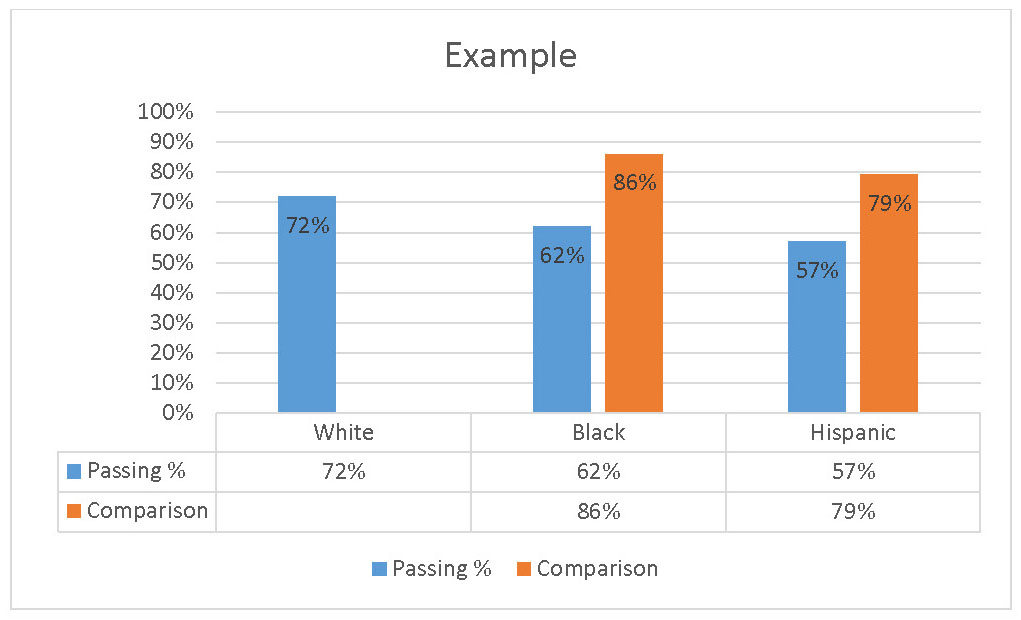The practice of using written examinations to qualify candidates for jobs or promotions is common among many fire departments in Texas and throughout the United States. Unfortunately, the Equal Employment Opportunity Commission (“EEOC”) and the U.S. Department of Justice have recently prosecuted discrimination claims against several large departments who use these exams.
Plaintiffs who file claims with the EEOC related to these tests typically assert a theory of discrimination liability known as disparate impact. Essentially, they claim the employment tests disproportionately affect a particular protected class (i.e. a specific race).
A recent example is the $99 million settlement the City of New York paid in March 2014 to black and Hispanic applicants to the Fire Department of New York. In the New York case, the Department of Justice alleged the city’s “use of Written Exams 7029 and 2043 … had an unlawful disparate impact on black and Hispanic applicants and did not adequately determine who was or was not qualified for the job of entry-level firefighter.” Similar cases have occurred in many jurisdictions, including Chicago and Austin.
The basis for liability in these disparate impact cases is the EEOC’s Uniform Guidelines on Employee Selection Procedures. The Uniform Guidelines do not prohibit the use of employment tests. However, they place several criteria on their use.
First, the test must not create an adverse impact on a protected class. This is measured using the 4/5ths or 80 percent rule.
The group with the highest passing rate is compared to the other groups taking the test. If any of the other groups do not have a passing rate of 80 percent or more of the highest group, the EEOC considers this evidence of an adverse impact.
Using the example chart, the white test takers passed with a 72 percent pass rate. This was the highest group taking the test. The black takers passed with a 62 percent rate which was 87 percent of the white pass rate. That means there was no adverse impact using the 80 percent rule for black candidates. However, the Hispanic takers passed with a 57 percent rate and only 79 percent compared to white candidates. This establishes some evidence of an adverse impact.
 Second, the test must be statistically valid. To be valid, the test must accurately assess the candidate’s capacity to successfully perform the job. This is measured using three types of validity: content validity, criterion validity, and construct validity. Content validity involves justifying selection procedure by showing it representatively samples significant parts of the job. Criterion validity involves justifying selection procedure by a statistical relationship between scores on the test and measures of job performance. In other words, the test helps predict good job performance. Construct validity involves identifying the psychological trait which underlies successful job performance.
Second, the test must be statistically valid. To be valid, the test must accurately assess the candidate’s capacity to successfully perform the job. This is measured using three types of validity: content validity, criterion validity, and construct validity. Content validity involves justifying selection procedure by showing it representatively samples significant parts of the job. Criterion validity involves justifying selection procedure by a statistical relationship between scores on the test and measures of job performance. In other words, the test helps predict good job performance. Construct validity involves identifying the psychological trait which underlies successful job performance.
Validation includes a thorough job analysis. The job analysis should be tailored to provide the information required for the type of validation strategy selected for the test.
The EEOC has provided some examples of tests which must meet the Uniform Guidelines. They are:
- Cognitive tests assess reasoning, memory, perceptual speed and accuracy, and skills in arithmetic and reading comprehension, as well as knowledge of a particular function or job;
- Physical ability tests measure the physical ability to perform a particular task or the strength of specific muscle groups, as well as strength and stamina in general;
- Sample job tasks (e.g., performance tests, simulations, work samples, and realistic job previews) assess performance and aptitude on particular tasks;
- Medical inquiries and physical examinations, including psychological tests, assess physical or mental health;
- Personality tests and integrity tests assess the degree to which a person has certain traits or dispositions (e.g., dependability, cooperativeness, safety) or aim to predict the likelihood that a person will engage in certain conduct (e.g., theft, absenteeism);
- Criminal background checks provide information on arrest and conviction history;
- Credit checks provide information on credit and financial history;
- Performance appraisals reflect a supervisor’s assessment of an individual’s performance; and
- English proficiency tests determine English fluency.
If a fire department uses testing for job candidates, it should implement some of the following best practices:
- Fire departments should administer tests and other selection procedures without regard to race, color, national origin, sex, religion, age (40 or older), or disability.
- Fire departments should ensure that employment tests and other selection procedures are properly validated for the positions and purposes for which they are used. The test or selection procedure must be job-related and its results appropriate for the employer’s purpose. While a test vendor’s documentation supporting the validity of
a test may be helpful, the employer is still responsible for ensuring that its tests are valid under UGESP. - If a selection procedure screens out a protected group, the employer should determine whether there is an equally effective alternative selection procedure that has less adverse impact and, if so, adopt the alternative procedure. For example, if the selection procedure is a test, the employer should determine whether another test would predict job performance but not disproportionately exclude the protected group.
- To ensure that a test or selection procedure remains predictive of success in a job, fire departments should keep abreast of changes in job requirements and should update the test specifications or selection procedures accordingly.
- Fire departments should ensure that tests and selection procedures are not adopted casually by managers who know little about these processes. A test or selection procedure can be an effective management tool, but no test or selection procedure should be implemented without an understanding of its effectiveness and limitations for the organization, its appropriateness for a specific job, and whether it can be appropriately administered and scored.
Employment tests can be a good way to select potentially successful candidates for many job positions. However, they can lead to employment discrimination claims if they are not properly validated and implemented. Using the best practices above should keep your department out of the proverbial frying pan.

Mark Smith
Managing Attorney
